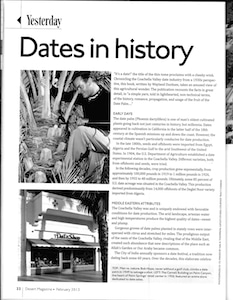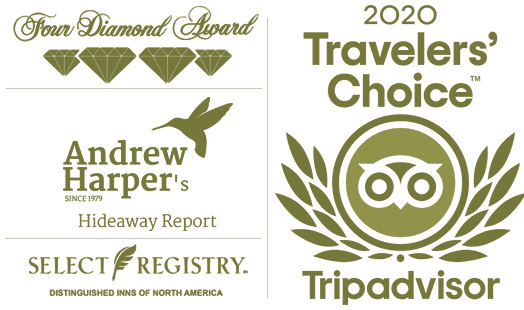 “It’s a date!” the title of the thin tome proclaims with a cheeky wink. Chronicling the Coachella Valley date industry from a 1930s perspective, this book, written by Wayland Dunham, takes an amused view of this agricultural wonder. The publication recounts the fact in great detail, in a “simple yarn, told in lighthearted, non-technical terms, of the history, romance, propagation, and usage of the fruit of the Date Palm…”
“It’s a date!” the title of the thin tome proclaims with a cheeky wink. Chronicling the Coachella Valley date industry from a 1930s perspective, this book, written by Wayland Dunham, takes an amused view of this agricultural wonder. The publication recounts the fact in great detail, in a “simple yarn, told in lighthearted, non-technical terms, of the history, romance, propagation, and usage of the fruit of the Date Palm…”
EARLY DAYS
the date palm (Phoenix dactylifera) is one of man’s oldest cultivated plants going back not just centuries in history, but millennia. Dates appeared in cultivation in California in the latter half of the 18th century at the Spanish missions up and down the coast. However, the coastal climate wasn’t particularly conducive for date production.
In the late 1800s, seeds and offshoots were imported rom Egypt, Algeria and the Persian Gulf to the arid Southwest of the United States. In 1904, the U.S. Department of Agriculture established a date experimental station in the Coachella Valley. Different varieties, both from offshoots and seeds, were tried.
In the following decades, crop production grew exponentially, from approximately 100,000 pounds in 1919 to 1 million pounds in 1926, and then by 1955 to 48 million pounds. Ultimately, some 85 percent of U.S. date acreage was situated in the Coachella Valley. This production derived predominantly from 14,000 offshoots of the Deglet Noor variety imported from Algeria.
View full article…




